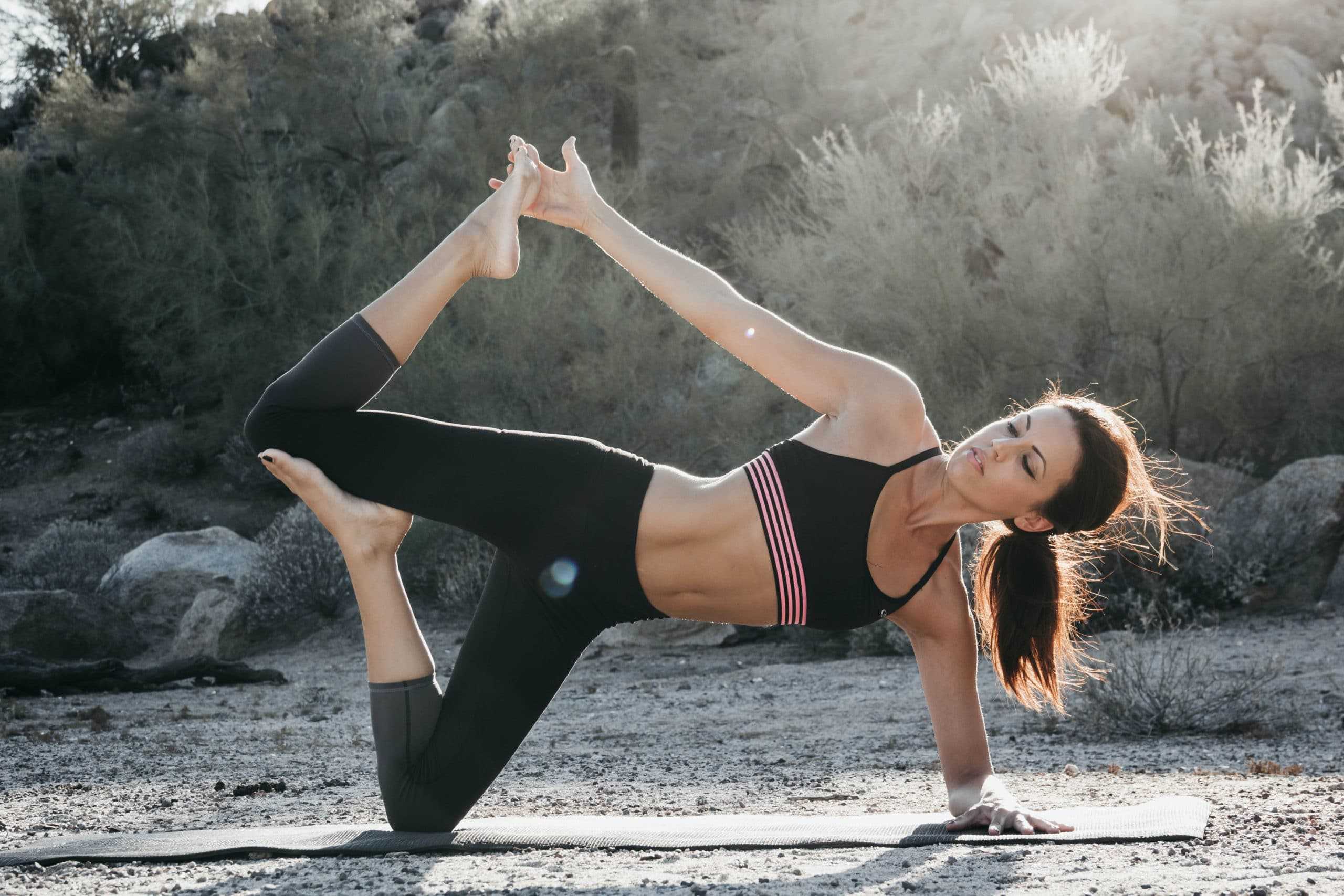Yoga as exercise is a physical activity consisting largely of asanas, often connected by flowing sequences called vinyasas, sometimes accompanied by the breathing exercises of pranayama, and usually ending with a period of relaxation or meditation. It is often known simply as yoga,despite the existence of multiple older traditions of yoga within Hinduism where asanas played little or no part, some dating back to the Yoga Sutras, and despite the fact that in no tradition was the practice of asanas central.
Yoga as exercise was created in what has been called the Modern Yoga Renaissance by the blending of Western styles of gymnastics with postures from Haṭha yoga in India in the 20th century, pioneered by Shri Yogendra and Swami Kuvalayananda. Before 1900 there were few standing poses in Haṭha yoga. The flowing sequences of salute to the Sun, Surya Namaskar, were pioneered by the Rajah of Aundh, Bhawanrao Shrinivasrao Pant Pratinidhi, in the 1920s. Many standing poses used in gymnastics were incorporated into yoga by Krishnamacharya in Mysore from the 1930s to the 1950s. Several of his students went on to found influential schools of yoga: Pattabhi Jois created Ashtanga Vinyasa Yoga,which in turn led to Power Yoga;B. K. S. Iyengar created Iyengar Yoga, and systematised the canon of asanas in his 1966 book Light on Yoga;Indra Devi taught yoga to many film stars in Hollywood; and Krishnamacharya’s son T. K. V. Desikachar founded the Krishnamacharya Yoga Mandalam in Chennai. Other major schools founded in the 20th century include Bikram Choudhury’s Bikram Yoga and Swami Sivananda of Rishikesh’s Sivananda Vedanta Schools of Yoga. Modern yoga spread across America and Europe, and then the rest of the world.
The number of asanas used in yoga as exercise has increased rapidly from a nominal 84 in 1830, as illustrated in Joga Pradipika, to some 200 in Light on Yoga and over 900 performed by Dharma Mittra by 1984. At the same time, the goals of Haṭha yoga, namely spiritual liberation (moksha) through the raising of kundalini energy, were largely replaced by the goals of fitness and relaxation, while many of Haṭha yoga’s components like the shatkarmas (purifications), mudras (seals or gestures including the bandhas, locks to restrain the prana or vital principle), and pranayama were much reduced or removed entirely.The term “hatha yoga” is also in use with a different meaning, a gentle unbranded yoga practice, independent of the major schools, sometimes mainly for women.International Day of Yoga in New Delhi, 2016
Yoga has developed into a worldwide multi-billion dollar business, involving classes, certification of teachers, clothing, books, videos, equipment, and holidays.The ancient cross-legged sitting asanas like lotus pose (Padmasana) and Siddhasana are widely recognised symbols of yoga.
The United Nations General Assembly established 21 June as “International Day of Yoga celebrated annually in India and around the world from 2015.On 1 December 2016, yoga was listed by UNESCO as an intangible cultural heritage.
The impact of postural yoga on physical and mental health has been a topic of systematic studies, with evidence that regular yoga practice yields benefits for low back pain and stress In 2017, a Cochrane review found low‐ to moderate‐certainty evidence that yoga improved back function compared to non-exercise



